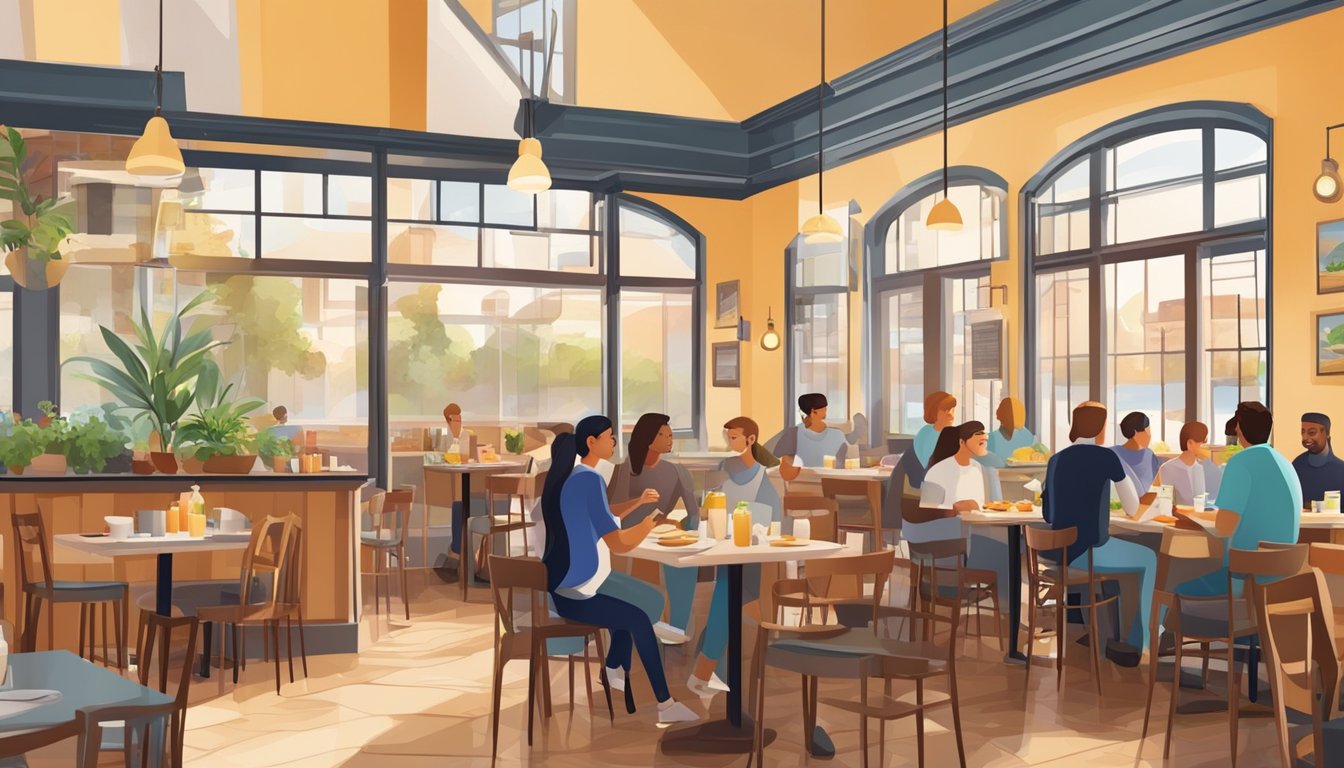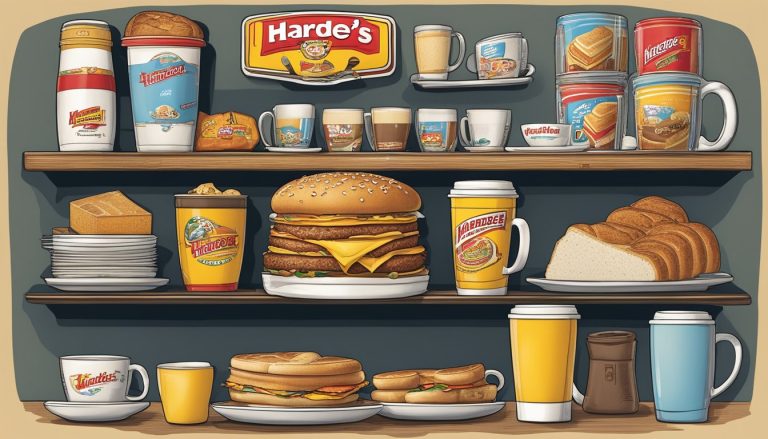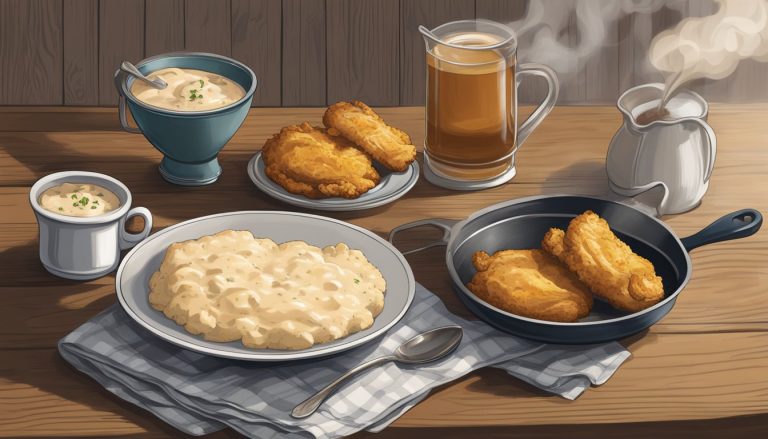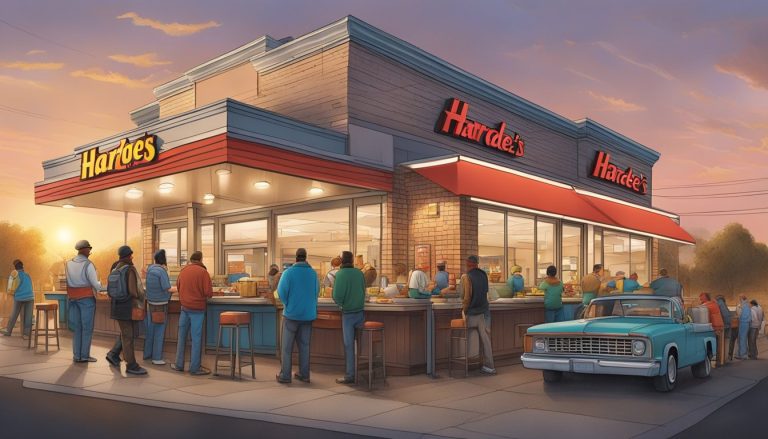Wilber Hardee, born in 1918 in Martin County, North Carolina, revolutionized the fast-food industry with his innovative approach to breakfast. In 1960, he opened the first Hardee’s restaurant, setting the stage for a chain that would become renowned for its morning offerings. Hardee’s biscuits quickly became a hallmark of the brand, satisfying hungry customers across the Midwest and Southeast regions of the United States.
Hardee’s entrepreneurial journey began after observing the success of McDonald’s in North Carolina. Inspired by the crowds at their opening, he decided to create his own fast-food venture. His vision extended beyond burgers and fries, recognizing the untapped potential in the breakfast market.
The story of Hardee’s growth is marked by both triumphs and challenges. Despite facing setbacks, including a high-stakes poker game that altered the company’s ownership, Wilber Hardee’s initial concept endured. The chain expanded rapidly, eventually becoming the third-largest fast-food company in the world by the early 1990s.
Wilber Hardee: The Entrepreneur’s Background

Wilber Hardee was born on August 15, 1918, in North Carolina. He grew up on his family’s farm, gaining early exposure to hard work and agricultural life.
As a young man, Hardee left the family business to pursue other interests. He initially worked as a musician before transitioning into the food industry as a grill cook.
On September 3, 1960, Hardee opened the first Hardee’s restaurant in Greenville, North Carolina. This marked the beginning of his journey as a fast-food entrepreneur.
Hardee’s entrepreneurial spirit was evident in his constant pursuit of new ideas. He had a restless mind that was always forming new concepts and turning them into realities.
Throughout his career, Hardee demonstrated remarkable resilience. After losing control of the Hardee’s chain, he bounced back by opening 84 more restaurants over the next five decades.
Hardee’s drive and determination made him a notable figure in the fast-food industry. His ability to adapt and persevere in the face of setbacks showcased his entrepreneurial mindset.
His legacy extends beyond the Hardee’s brand. Wilber Hardee’s life story serves as an inspiration to aspiring entrepreneurs in North Carolina and beyond.
Hardee’s Rise in Greenville, North Carolina

Wilber Hardee’s entrepreneurial spirit and innovative approach to fast food led to the rapid growth of Hardee’s in Greenville, North Carolina. The restaurant’s success was built on a foundation of quality food and strong community ties.
Birth of a Fast Food Icon
Wilber Hardee opened the first Hardee’s restaurant in Greenville, North Carolina, in September 1960. He drew inspiration from McDonald’s success and implemented a similar business model. Hardee’s focused on a streamlined menu featuring char-grilled burgers, fast service, and affordable prices.
The restaurant quickly gained popularity among locals. Its efficient service and tasty offerings set it apart from competitors. Within a short time, Hardee expanded his business, opening a second location in Rocky Mount.
By 1963, Hardee’s had grown significantly and went public. This move allowed for further expansion and solidified its position in the fast food industry.
The Community Connection
Hardee’s success in Greenville was largely due to its strong connection with the local community. The restaurant became a popular gathering spot for residents, offering a convenient and affordable dining option.
Wilber Hardee’s commitment to quality and customer satisfaction resonated with Greenville’s population. The restaurant’s friendly atmosphere and consistent service helped build a loyal customer base.
As Hardee’s grew, it provided employment opportunities for local residents. This further strengthened its ties to the community and contributed to the local economy.
The restaurant’s success in Greenville served as a blueprint for future expansion. It demonstrated the potential of Hardee’s business model in other markets.
The Artistic Vision Behind Hardee’s Morning Meals

Wilber Hardee’s innovative approach transformed breakfast into a culinary art form. His vision blended creativity with practicality, introducing new concepts that redefined morning dining experiences.
Innovative Breakfast Concepts
Hardee’s pioneered unique breakfast offerings that set it apart from competitors. The chain introduced the Made From Scratch Biscuits™, a signature item crafted fresh daily. These golden, flaky biscuits became the foundation for various breakfast sandwiches.
Hardee’s also launched the Monster Biscuit™, a hearty creation featuring ham, bacon, sausage, egg, and cheese. This bold combination appealed to customers seeking substantial morning meals.
The Loaded Omelet Biscuit brought a diner-style favorite to fast food, featuring a fluffy omelet stuffed with bacon, sausage, ham, and cheese.
Design Meets Culinary Art
Hardee’s elevated breakfast presentation through thoughtful design. The chain focused on visual appeal, creating eye-catching menu displays and packaging.
Breakfast platters were arranged to showcase each component, making them Instagram-worthy before social media existed. The Frisco Breakfast Sandwich, served on sourdough bread, exemplified this artistic approach.
Hardee’s introduced innovative cooking methods, like the char-broiling technique for breakfast meats. This process enhanced flavors and textures, turning ordinary ingredients into culinary delights.
The chain also experimented with unexpected flavor combinations, such as the Cinnamon Swirl French Toast Breakfast Sandwich, blending sweet and savory elements.
Strategic Business Growth and CKE Restaurants

Wilber Hardee’s vision for Hardee’s laid the foundation for significant expansion and corporate evolution. The brand’s growth trajectory led to its eventual acquisition by CKE Restaurants, marking a new era of strategic development.
Expanding the Brand
Hardee’s rapid growth began shortly after its founding in 1960. By 1975, the chain had opened 200 locations across the Southeastern United States. Franchising played a crucial role in this expansion, allowing the brand to reach new markets quickly.
The company’s menu evolved to meet changing consumer tastes. In the 1980s, Hardee’s introduced made-from-scratch biscuits, which became a signature breakfast item. This move helped establish Hardee’s as a strong competitor in the fast-food breakfast market.
By 1984, Hardee’s had become the fourth-largest fast-food chain in America. This growth demonstrated the effectiveness of the company’s expansion strategy and menu innovations.
Merger and Acquisitions
In 1997, CKE Restaurants acquired Hardee’s for $327 million. This merger brought together two major fast-food brands, as CKE already owned Carl’s Jr. The acquisition aimed to create synergies and expand market reach.
CKE implemented several changes to revitalize the Hardee’s brand. They reintroduced charbroiled burgers, a technique originally used by Wilber Hardee. The company also launched thick Black Angus burgers to appeal to customers seeking higher-quality options.
By 2010, CKE had grown to operate 3,134 restaurants, including 1,901 Hardee’s locations. The merger allowed for shared resources and marketing strategies between Hardee’s and Carl’s Jr., strengthening both brands’ positions in the competitive fast-food industry.
Wilber Hardee’s Personal Journey

Wilber Hardee’s life was marked by entrepreneurial spirit and personal growth. His journey encompassed both business ventures and spiritual awakening, shaping him into a resilient and innovative individual.
Challenges and Triumphs
Wilber Hardee faced significant setbacks in his career. After founding Hardee’s in 1960, he lost control of the company in a poker game. This loss could have been devastating, but Hardee’s resilience shone through. He quickly regained his self-confidence and embarked on new ventures.
Over the next five decades, Hardee opened 84 more restaurants. His entrepreneurial drive never wavered. New ideas constantly formed in his mind, leading to one project after another. Hardee’s ability to bounce back from adversity demonstrated his unwavering determination and business acumen.
From Business to Beliefs
Beyond his professional life, Wilber Hardee underwent a profound personal transformation. He became a Born Again Christian, which greatly influenced his outlook and actions. This spiritual awakening added a new dimension to his life, complementing his business pursuits.
Hardee’s faith likely played a role in his resilience and continued drive to create new businesses. It may have provided him with a sense of purpose beyond financial success. His journey from a focused entrepreneur to a man balancing business and faith showcases the multifaceted nature of his character.
Hardee’s in Popular Culture

Hardee’s has made its mark beyond fast food, appearing in various forms of media and artistic expression. The brand’s influence extends to literature and music, showcasing its cultural significance.
Hardee’s and Literature
Hardee’s features in several books and novels, often as a setting or backdrop for character interactions. In Stephen King’s “11/22/63”, the protagonist visits a Hardee’s during his time-traveling journey. The restaurant serves as a familiar touchstone in an unfamiliar past.
Some non-fiction works also mention Hardee’s. Business books use the chain as a case study in franchising and fast-food industry growth. Local history books in the Southeast frequently include Hardee’s as part of their community narratives.
Musical Tributes
Musicians have referenced Hardee’s in their lyrics, particularly in country and hip-hop genres. Country singer Brad Paisley mentions Hardee’s in his song “American Saturday Night”, using it as a symbol of small-town America.
Rap artists sometimes use Hardee’s as a cultural reference point. In some tracks, it represents late-night hangouts or a first job experience. These musical nods help cement Hardee’s place in the American cultural landscape.
Some local bands have even performed at Hardee’s locations during promotional events, creating a unique fusion of fast food and live music.
Innovation and Future Vision

Wilber Hardee’s commitment to innovation shaped Hardee’s trajectory in the fast food industry. His forward-thinking approach laid the groundwork for the chain’s continued evolution and adaptation to changing consumer preferences.
Embracing Technology
Hardee’s has integrated digital ordering systems and mobile apps to streamline the customer experience. Self-service kiosks in select locations allow for faster, more accurate orders. The chain has also implemented drive-thru innovations, including dual-lane systems and digital menu boards.
Hardee’s loyalty program leverages data analytics to offer personalized promotions and rewards. This tech-driven approach helps build customer retention and provides valuable insights into consumer behavior.
Upcoming Trends in Quick Service
Hardee’s is exploring plant-based menu options to cater to the growing demand for vegetarian and vegan alternatives. The chain is also focusing on sustainable packaging solutions to reduce its environmental impact.
Delivery partnerships with third-party services have expanded Hardee’s reach beyond traditional dine-in and drive-thru options. The company is testing ghost kitchens in urban areas to meet the increasing demand for delivery-only services.
Hardee’s is investing in kitchen automation technologies to improve efficiency and consistency. These innovations aim to reduce food preparation times and enhance product quality across all locations.
Assessing the Impact on Local Communities

Hardee’s restaurant chain has made significant contributions to local communities since its founding. The company’s presence has created economic opportunities and fostered community engagement through various initiatives.
Economic Contributions
Hardee’s has been a major employer in many towns and cities across the United States. The chain has created thousands of jobs, from entry-level positions to management roles, providing income and career opportunities for local residents. This employment boost has had a ripple effect on local economies.
Small businesses in the vicinity of Hardee’s locations often benefit from increased foot traffic. The restaurant’s presence can attract customers to nearby shops and services. Additionally, Hardee’s frequently partners with local suppliers for ingredients and services, supporting other businesses in the community.
Property values near Hardee’s restaurants may see a positive impact. The establishment of a well-known chain can signal economic growth in an area, potentially attracting further development and investment.
Community Outreach Efforts
Hardee’s has implemented various programs to give back to the communities it serves. The chain often sponsors local sports teams and events, promoting community spirit and youth engagement. These sponsorships provide financial support and increase community visibility.
Many Hardee’s locations participate in fundraising initiatives for local schools and charities. These efforts range from percentage nights, where a portion of sales goes to a designated cause, to direct donations of food or resources for community events.
The company has also been involved in disaster relief efforts. During natural disasters or other crises, Hardee’s restaurants have provided meals to first responders and affected residents, demonstrating a commitment to community support in times of need.
Hardee’s encourages its franchisees to be active community members. This local involvement helps build stronger relationships between the restaurant and the people it serves, fostering a sense of trust and loyalty.
Hardee’s Historical Significance

Hardee’s has left an indelible mark on the American fast food landscape since its inception in 1960. The brand’s journey from a single restaurant to a major chain reflects key shifts in American dining culture and business practices.
Pivotal Moments in the Brand’s History
Wilber Hardee opened the first Hardee’s in Greenville, North Carolina on September 3, 1960. The restaurant’s initial menu featured affordable burgers, with hamburgers priced at 15 cents and cheeseburgers at 20 cents.
In 1963, Hardee partnered with Leonard Rawls and Jim Gardner, leading to rapid expansion through franchising. This decision accelerated the brand’s growth but ultimately resulted in Hardee losing control of his namesake company.
By 1984, Hardee’s had climbed to become the fourth-largest restaurant chain in America, showcasing its widespread appeal and successful business model.
Legacy and Influence
Hardee’s pioneered the concept of char-grilled burgers in fast food, setting a new standard for flavor in the industry. This innovation influenced competitors and shaped consumer expectations for fast food quality.
The brand’s expansion strategy became a blueprint for other aspiring fast food chains. Hardee’s demonstrated how rapid franchising could lead to significant market presence.
Hardee’s also played a role in shaping breakfast offerings in the fast food sector. Their introduction of made-from-scratch biscuits in the 1970s helped establish breakfast as a key part of the fast food business model.




